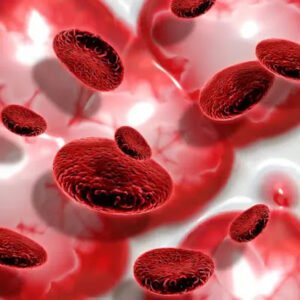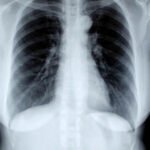Thrombocytosis, also known as a high platelet count, occurs when there is an excess of platelets in the blood.
Platelets are essential blood cells that play a crucial role in clotting to prevent excessive bleeding.
While a high platelet count may not always be a cause for concern, it can lead to blood clotting problems and potentially serious conditions such as cancer.
Types of Thrombocytosis
There are two primary types of thrombocytosis: essential thrombocythemia and reactive thrombocytosis.
Essential Thrombocythemia
Essential thrombocythemia, also referred to as primary thrombocytosis, is a rare blood disorder characterized by the overproduction of platelets in the bone marrow.
This condition is often caused by genetic mutations in specific genes like the JAK2 and CALR genes.
Essential thrombocythemia is classified as a myeloproliferative neoplasm (MPN).
Reactive Thrombocytosis
Reactive thrombocytosis, also known as secondary thrombocytosis, occurs when platelet levels increase in response to an underlying condition, infection, medication, or bleeding.
Unlike essential thrombocythemia, reactive thrombocytosis is often temporary and resolves once the underlying cause is treated.
Diagnosing High Platelet Count
A high platelet count is often discovered during routine blood work and may require further diagnostic tests to identify any associated underlying conditions.
Healthcare providers may look for symptoms such as bruising, bleeding, and signs of infection or other underlying health issues. Diagnostic tests may include:
Iron panel to assess iron levels
Complete blood count (CBC) to measure different blood cell counts
C-reactive protein and erythrocyte sedimentation rate (ESR) tests to detect inflammation
Genetic testing to check for specific gene mutations
Bone marrow biopsy to evaluate the bone marrow
Cancer screening tests if indicated
When to Be Concerned
While a high platelet count may not always be a cause for immediate concern, there are certain situations where it may indicate a higher risk of complications.
These situations include:
Blood Clots
High platelet counts are often associated with blood clotting problems.
Certain individuals, such as those who are pregnant, have recently undergone surgery, have a family history of blood clots, have cancer, or are undergoing cancer treatment, may have an increased risk of developing blood clots.
Blood clots can form in various blood vessels, leading to symptoms such as headaches, dizziness, pain, numbness, and even strokes or seizures.
Pregnancy Complications
During pregnancy, platelet levels can fluctuate, and a very high platelet count can increase the risk of blood clots that can affect blood flow to the embryo or fetus.
This can lead to complications such as high blood pressure, slow fetal growth, premature delivery, placental separation, or miscarriage.
Close monitoring and appropriate medical care are essential for managing platelet levels during pregnancy.
Cancer
Both primary and secondary thrombocytosis can be associated with certain types of cancer.
In some cases, a high platelet count may be one of the first signs of cancer.
Common cancers linked to high platelet counts include ovarian cancer, lung cancer, breast cancer, gastrointestinal cancer, lymphoma, acute leukemia, and myelofibrosis.
If a high platelet count persists and other underlying causes are ruled out, further investigation for potential cancer may be necessary.
Less Concerning Causes of High Platelet Count
While a high platelet count can be a cause for concern, there are also less worrisome causes that may lead to temporary elevation.
These include:
Short-term conditions such as infections, inflammation, or severe blood loss.
Exercise, which can temporarily increase platelet count due to the release of stress hormones like adrenaline.
Stress, both short-term and long-term, which can affect platelet function and increase the risk of clotting.
High platelet count in infants and children, often associated with per-term birth or infections and typically resolves on its own.
Certain types of anemia, surgery or trauma, and medication usage can also cause a temporary increase in platelet count.
While these conditions may not necessarily require treatment for the high platelet count itself, appropriate management and treatment of the underlying cause are crucial to prevent potential complications.
Treatment Options for High Platelet Count
The treatment of a high platelet count depends on the underlying cause and the presence of symptoms or associated complications.
In some cases, no treatment may be necessary if there are no symptoms or risks.
However, if treatment is required, it may involve:
Medications to regulate platelet production or prevent clotting, especially in cases of essential thrombocythemia.
Treating the underlying condition, infection, or inflammation causing reactive thrombocytosis.
Lifestyle modifications such as regular exercise, stress management, and avoiding certain medications or substances that can affect platelet function.
Regular monitoring and follow-up with healthcare providers are essential to ensure appropriate management and prevent potential complications.
Causes of High Platelet Counts in Children:
Infections and Inflammation – Common infections like pneumonia, rheumatic fever, or inflammatory conditions such as inflammatory bowel disease can trigger secondary thrombocytosis in children.
Iron Deficiency – Anemia, specifically iron-deficiency anemia, can sometimes cause the bone marrow to produce more platelets.
Trauma or Surgery – After significant trauma, surgery, or as a response to certain medications, the body may produce excess platelets to aid in the healing process.
Chronic Diseases – Chronic conditions like rheumatoid arthritis, kidney disease, or certain cancers can lead to thrombocytosis.
Bone Marrow Disorders – Rarely, bone marrow disorders like myeloproliferative disorders (e.g., essential thrombocythemia) may lead to primary thrombocytosis.
Symptoms of High Platelet Counts
In many cases, thrombocytosis may not display noticeable symptoms and is often detected incidentally during routine blood tests.
However, if symptoms do occur, they may include:
Unexplained bruising or bleeding
Headaches and migraines
Dizziness or lightheadedness
Numbness or tingling in extremities
Redness or warmth in the hands and feet
Outlook for High Platelet Counts
In most cases, high platelet counts are reactive and resolve once the underlying cause is treated or managed.
However, it is important to note that persistent high platelet counts can be associated with an increased risk of cancer.
Regular monitoring and further evaluation may be necessary to identify any underlying malignancies.
Early detection and appropriate treatment of cancer can greatly improve outcomes and reduce the risk of complications associated with high platelet counts.
Conclusion
A high platelet count, or thrombocytosis, can have various causes and implications.
While it may not always be a cause for immediate concern, it is important to be aware of the potential risks and associated symptoms.
Understanding the underlying cause of a high platelet count is crucial for appropriate management and treatment.
Regular communication with healthcare providers and adherence to recommended screenings and follow-ups can help ensure early detection and intervention, leading to better outcomes and improved overall health.







